
Clark Ashton SmithOne of the few of Lovecraft's correspondents who might be considered his peer in terms of talent, Clark Ashton Smith started as a poet whose early work was championed by critics. He also wrote many eldritch and wildly inventive short stories for the pulp magazines such as Weird Tales. He used to sit in the woods near Auburn, CA and read his stories aloud to savor and perfect his writing style. Each is a small gem of outre imagery and careful craftsmanship. Lovecraft said "In sheer daemonic strangeness and fertility of conception, he is perhaps unexcelled by any other writer, dead or living. Who else has seen such gorgeous, luxuriant, and feverishly distorted visions of infinite spheres and multiple dimensions and lived to tell the tale?" His Mythos classic The Return of the Sorcerer was famously adapted for Rod Serling's Night Gallery TV series. Like Robert E. Howard, Smith wrote several story cycles, most of which intersect the Cthulhu Mythos at least slightly, so most of his work could be considered part of the extended Mythos universe. |
|
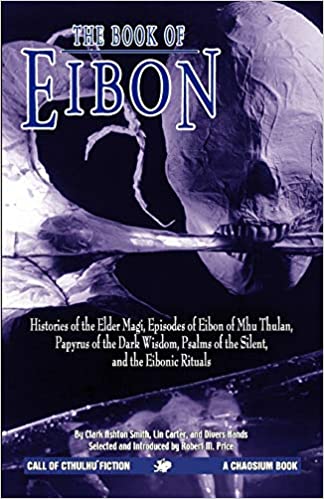 |
The Book of EibonThe Book of Eibon, the creation of Clark Ashton Smith, ranks behind Lovecraft's Necronomicon as a shunned repository of mystical horrors surviving blasphemously from elder eons. Not content with his own and Lovecraft's citations of the Book, Smith actually wrote two chapters of it, his famous stories "The Door to Saturn" and "The Coming of the White Worm." Lin Carter knew a good thing when he saw it and decided it would be fun to write and to read the remaining Eibonic chapters. So he took in hand to write a number of them, intending to finish the book one day. This he did not live to do, but others took up the fallen banner, supplying more of the droll yet frightening episodes, as well as various liturgical and magical arcana the Book of Eibon was said to contain. |
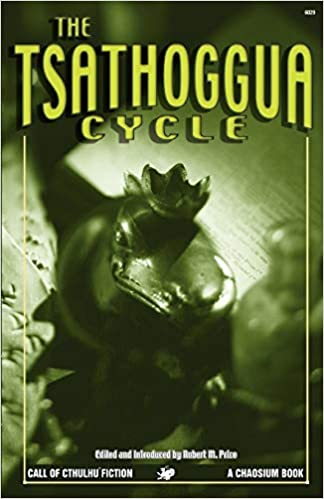 |
The Tsathoggua CycleCan a god be a pet? Even a devil-god who relishes human sacrifice? It is hard to deny that for his creator and godfather, Clark Ashton Smith and H. P. Lovecraft, Tsathoggua was exactly that. They found the Saturnian-Hyperborean-N'klaian toad-bat-sloth-deity as cute and adorable as horrific, and this strange ambivalence echoes throughout their various tales over which Great Tsathoggua casts his batrachian shadow! Some are droll fables of human foibles; others are terrifying adventures of human delvers who perish in the fire of a religious fanaticism fully as awful as its super-sub-human object of worship. |
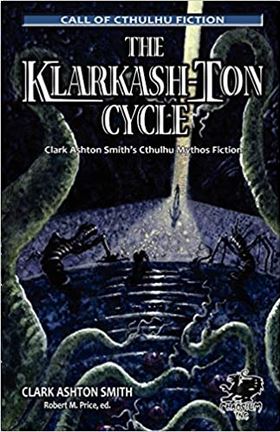 |
The Klarkash-Ton CycleChaosium's third collection of Clark Aston Smith's Cthulhu Mythos-related fiction, collected and arranged by Robert M. Price, with commentary for each of the stories. Contents: A Rendering from the Arabic (variant of The Return of the Sorcerer), The Eidolon of the Blind, The Ghoul, The Hunters from Beyond, The Infernal Star, The Nameless Offspring, The Treader of the Dust, The Vaults of Abomi (variant of The Vaults of Yoh-Vombis), The Werewolf of Averoigne (variant of The Beast of Averoigne), Ubbo-Sathla, Vulthoom. |
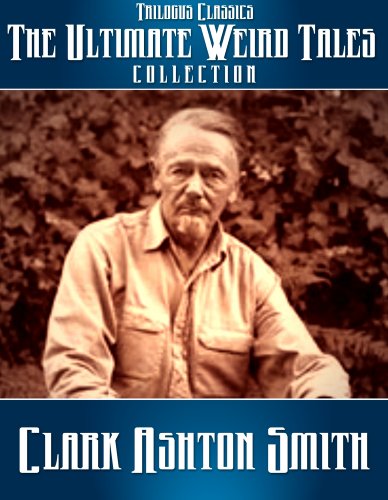 |
The Ultimate Weird Tales Collection (Kindle ebook)This bargain volume collects 133 works of horror, science fiction and fantasy by Clark Ashton Smith, who was the third member of the literary circle that included authors Robert E. Howard and H.P. Lovecraft. Excluding only fragmentary notes, excerpts and synopses he never finished during his lifetime, this is perhaps the largest single collection of all his published and unpublished fiction. Mythos-related stories include: The Coming of the White Worm, The Door to Saturn, The Holiness of Azedarac, The Nameless Offspring, The Return of the Sorcerer, The Seven Geases, The Tale of Satampra Zeiros, Ubbo-Sathla. |
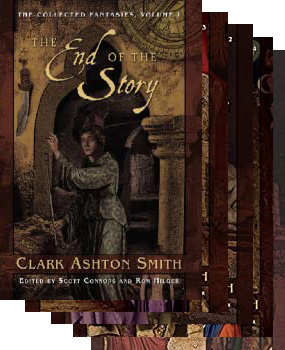 |
The Collected Fantasies (Five-Volume Set, Kindle ebooks or softcovers)A more deluxe set bringing together Smith's collected works. Published in chronological order, with extensive story and bibliographic notes, this series not only provides access to stories that have been out of print for years, but gives them a historical and social context. Series editors Scott Conners and Ronald S. Hilger excavated the still-existing manuscripts, letters and various published versions of the stories, creating a definitive “preferred text” for Smith's entire body of work. |
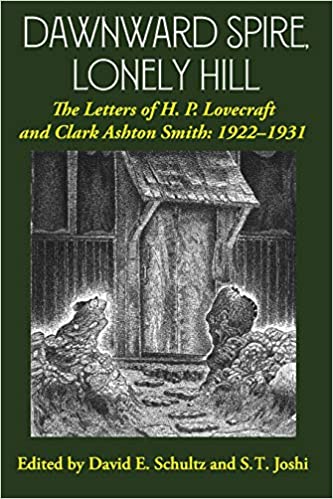 |
Dawnward Spire, Lonely Hill: The Letters of H. P. Lovecraft and Clark Ashton Smith, 1922-1931The publication of the complete extant correspondence of H. P. Lovecraft and Clark Ashton Smith is a landmark in the study of weird fiction. These two titans remained close colleagues for fifteen years, and their letters shed light not only on each writer’s interest in the other’s work but also on the literary culture in which they produced their distinctive work. |
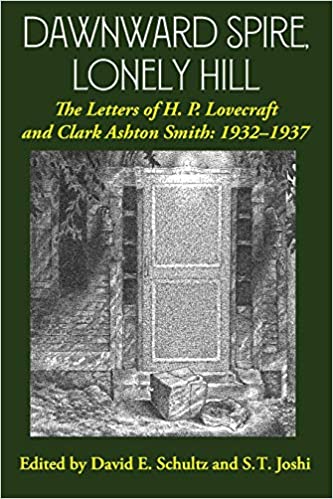 |
Dawnward Spire, Lonely Hill: The Letters of H. P. Lovecraft and Clark Ashton Smith, 1932-1937In this second volume of the correspondence of H. P. Lovecraft and Clark Ashton Smith, we find the two authors in the prime of their careers. Smith was publishing frequently in the weird and science fiction pulps of the day, compelled to earn money to take care of his ailing parents. Lovecraft had suffered some painful setbacks—the rejection of his work by Putnam’s, Knopf, and other book publishers—but he was continuing to develop his Cthulhu Mythos, and Smith was making distinctive contributions to it. |
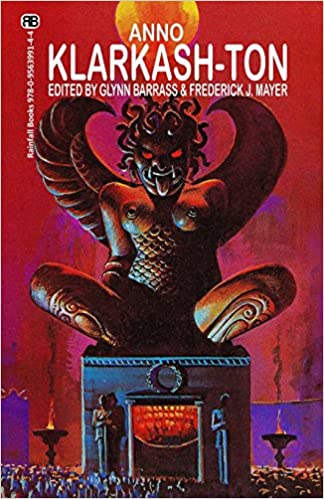 |
Anno Klarkash-TonA collection of poetry, fiction, articles and artwork inspired by the writings of Clark Ashton Smith by some of the finest practitioners of their art around today. |
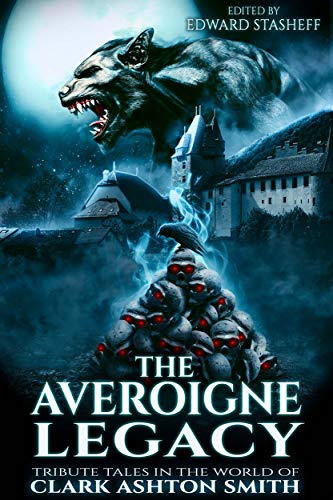 |
The Averoigne LegacyThe lore of Averoigne didn’t end with Clark Ashton Smith. Over the decades other writers, fascinated by this “Lovecraft country” of medieval France, added their own contributions. For the first time collected together into one volume, you can read over two dozen poems and stories of Averoigne (including some never before published) by Mythos authors like DJ Tyrer, Richard Tierney, Brian McNaughton, Michael Minnis, and James Chambers. Revisit Vyônes and Périgon, meet Luc le Chaudronnier and Azédarac once again, as tales of harpies and werewolves, ogres and giants, changelings and cockatrices await you. |
Cthulhu Files Bookstore ContentsCthulhu Files Home PageCopyright 2021-2025, Joseph F. Morales |
